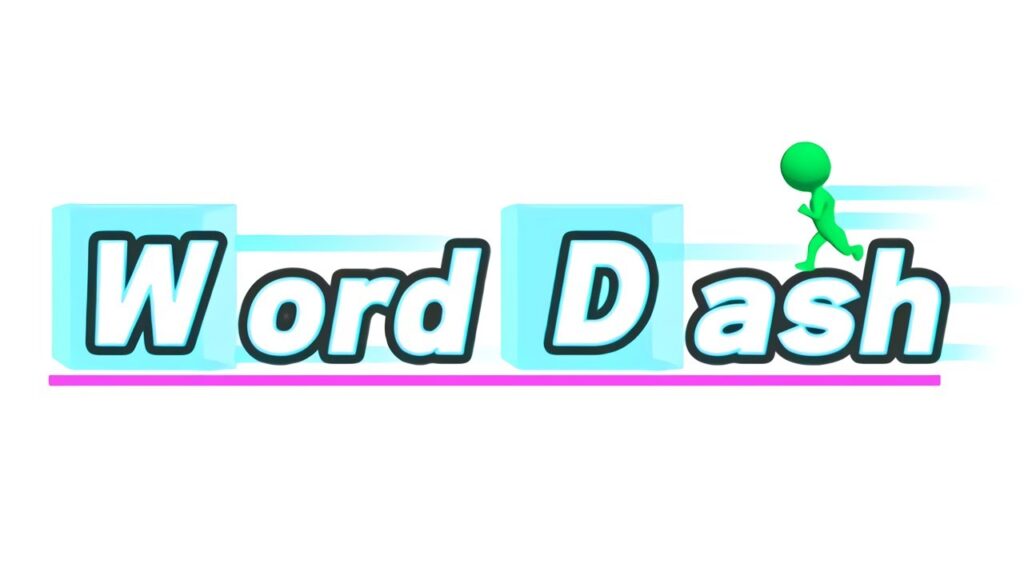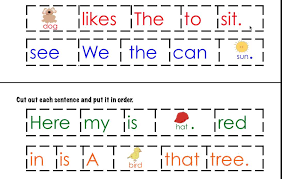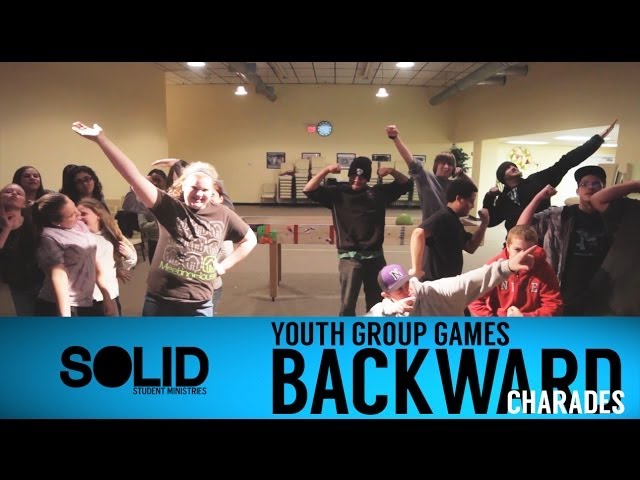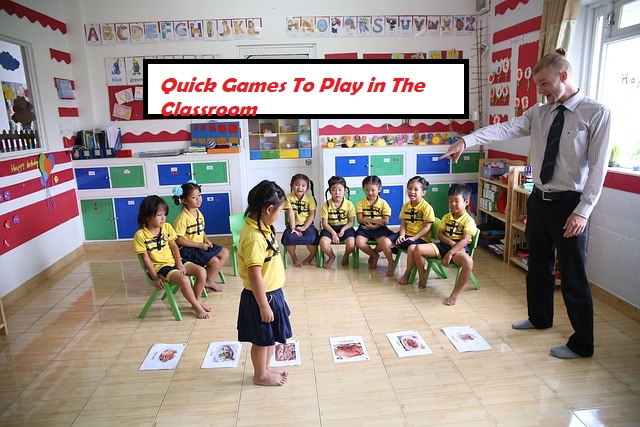The classroom environment can sometimes become monotonous, but introducing games can instantly inject fun and engagement into the learning process.
Quick games not only provide a break from traditional teaching methods but also offer numerous benefits for students.
In this post, I will explore the top 10 best quick games to play in the classroom.
These games are specifically designed to be easy to set up and play, ensuring that teachers and students can enjoy interactive and educational experiences.
From word games to math challenges and creative activities, this list covers a diverse range of games suitable for different subjects and age groups.
Get ready to transform your classroom into an exciting and dynamic learning space with these engaging games!
See How to Use Exam Timetable to Ace Your Exams
Factors to Consider When Choosing Classroom Games
Choosing the right classroom games requires careful consideration to ensure they are effective and suitable for your students.
Below are some essential factors to keep in mind:
- Age-appropriate games: Select games that are suitable for the age group you are teaching. Consider the complexity of the game, language level, and appropriateness of the content.
- Learning objectives alignment: Ensure that the games align with your desired learning outcomes. Whether it’s reinforcing specific skills, fostering teamwork, or promoting critical thinking, the games should support your educational goals.
- Accessibility and ease of setup: Opt for games that are easily accessible and require minimal setup. Consider the availability of materials, time constraints, and the ability to adapt the game to different classroom sizes.
By considering these factors, you can choose classroom games that are engaging, relevant, and beneficial for your student’s learning experience.
Game 1: “Word Dash”

Overview and Objective:
“Word Dash” is a fast-paced word association game that challenges students to think quickly and creatively.
The objective is to come up with words related to a given category within a limited time frame.
Materials Needed:
- Whiteboard or blackboard
- Markers or chalk
- Timer or stopwatch
Instructions for Gameplay:
- Divide the class into teams of 3-4 students each.
- Choose a category, such as “Animals,” “Foods,” or “Sports.”
- Select a starting team and write the chosen category at the top of the board.
- Set a timer for a specific duration, such as 30 seconds.
- The starting team must quickly shout out words related to the category while the timer is running.
- The team can continue naming words until the timer stops.
- Once the timer ends, the next team in line takes their turn.
- Each team gets a chance to come up with words within the time limit.
- Keep track of the number of valid words each team provides.
- After each round, tally the scores and announce the winning team.
Variations:
- To make the game more challenging, set a rule that each word provided must start with the last letter of the previous word.
- Introduce bonus points for unique or less common words.
- Allow teams to challenge the validity of words provided by other teams, promoting critical thinking and discussion.
“Word Dash” is an exciting game that encourages quick thinking, vocabulary expansion, and teamwork.
It creates a lively and competitive atmosphere in the classroom, making learning enjoyable and memorable.
Game 2: “Math Mania”
Overview and Objective:
“Math Mania” is a fast-paced math game that challenges students to solve math problems quickly. The objective is to correctly answer as many math problems as possible within a given time limit.
Materials Needed:
- Whiteboard or blackboard
- Markers or chalk
- Timer or stopwatch
- Math problem cards or a list of math problems
Instructions for Gameplay:
- Divide the class into teams of 2-4 students each.
- Write a math problem on the board, such as an addition, subtraction, multiplication, or division question.
- Set a timer for a specific duration, such as 30 seconds.
- The first team to solve the math problem must raise their hand and provide the answer before the timer runs out.
- If the answer is correct, the team earns a point. If the answer is incorrect or no team answers in time, the opportunity passes to the next team.
- Repeat the process with a new math problem for each round.
- Keep track of the scores and announce the winning team at the end.
Variations:
- Adjust the difficulty level of the math problems based on the grade level of the students.
- Incorporate different types of math problems or introduce word problems to enhance critical thinking skills.
- Include bonus rounds where teams can earn extra points by solving more challenging math problems or answering questions quickly.
“Math Mania” not only improves students’ math skills but also enhances their ability to solve problems under pressure.
It fosters healthy competition, teamwork, and quick thinking, making math lessons exciting and engaging.
Game 3: “Trivia Showdown”

Overview and Objective:
“Trivia Showdown” is an interactive and competitive trivia game that tests students’ knowledge across various subjects.
The objective is to answer as many trivia questions correctly to earn points and emerge as the ultimate trivia champion.
Materials Needed:
- Trivia question cards or a list of trivia questions
- Buzzer or a device to indicate who buzzed first (optional)
- Scoreboard or paper and markers to keep track of scores
Instructions for Gameplay:
- Divide the class into teams of 3-5 students each.
- Prepare a set of trivia questions covering different topics, such as history, science, literature, and pop culture.
- Determine the order of play or use a buzzer system to indicate which team buzzes in first to answer.
- Ask the first trivia question, and the team that buzzes in or raises their hand first gets the opportunity to answer.
- If the team provides the correct answer, they earn a point. If the answer is incorrect or no team answers in time, the question passes to the next team.
- Continue asking questions and rotating through the teams until all the questions have been answered or a predetermined number of rounds have been completed.
- Keep track of the scores and announce the winning team with the highest number of points.
Variations:
- Adjust the difficulty level of the questions based on the grade level or subject being taught.
- Add a time limit for answering questions to create a sense of urgency and challenge.
- Introduce bonus rounds where teams can earn extra points by answering bonus questions or completing specific tasks.
“Trivia Showdown” is an exciting game that not only encourages knowledge retention but also promotes critical thinking, teamwork, and healthy competition.
It can be customized to suit different age groups and subjects, making it a versatile and engaging game for the classroom.
Game 4: “Charades Challenge”

Overview and Objective:
“Charades Challenge” is a classic pantomime game that requires students to act out words or phrases without speaking, while their teammates guess the correct answer.
The objective is to successfully convey the given word or phrase within a limited time frame.
Materials Needed:
- Word or phrase cards (written on small pieces of paper)
- Timer or stopwatch
- Optional: Pen and paper for keeping score
Instructions for Gameplay:
- Divide the class into two teams.
- Each team takes turns selecting a player to be the actor for the round.
- The actor chooses a word or phrase card without showing it to anyone else.
- The actor then tries to convey the word or phrase through gestures, body movements, and facial expressions without speaking or making any sounds.
- The teammates of the actor have a limited time (e.g., 1-2 minutes) to guess the word or phrase correctly.
- If the team guesses correctly within the time limit, they earn a point. If they are unable to guess or guess incorrectly, no point is awarded.
- Repeat the process with the other team, taking turns and rotating the role of the actor.
- Keep track of the points earned by each team.
- The team with the highest number of points at the end of the game wins.
Variations:
- Adjust the difficulty level of the words or phrases based on the age group and language proficiency of the students.
- Introduce themed rounds, such as movie titles, book titles, or vocabulary words related to a specific subject.
- Allow teammates to provide verbal cues or ask yes/no questions to help them guess the word or phrase.
“Charades Challenge” is a fun and interactive game that promotes communication skills, creativity, and teamwork.
It encourages students to think on their feet and use non-verbal communication effectively, creating an enjoyable and engaging learning experience in the classroom.
Game 5: “Pictionary Party”

Overview and Objective:
“Pictionary Party” is a popular drawing and guessing game where players must illustrate words or phrases while their teammates try to guess the correct answer.
The objective is to successfully convey the given word or phrase through drawings within a limited time frame.
Materials Needed:
- Whiteboard or large paper
- Markers or colored pencils
- Timer or stopwatch
- Word or phrase cards (written on small pieces of paper)
Instructions for Gameplay:
- Divide the class into two teams.
- Each team takes turns selecting a player to be the drawer for the round.
- The opposing team selects a word or phrase card without showing it to the drawing team.
- The drawer has a limited time (e.g., 1-2 minutes) to illustrate the word or phrase through drawings on the whiteboard or large paper.
- The teammates of the drawing team must try to guess the word or phrase based on the drawings.
- If the team guesses correctly within the time limit, they earn a point. If they are unable to guess or guess incorrectly, no point is awarded.
- Repeat the process with the other team, taking turns and rotating the role of the drawer.
- Keep track of the points earned by each team.
- The team with the highest number of points at the end of the game wins.
Variations:
- Adjust the difficulty level of the words or phrases based on the age group and language proficiency of the students.
- Introduce themed rounds, such as objects, animals, occupations, or idioms.
- Allow the use of simple shapes or symbols to assist in conveying the meaning of the word or phrase.
“Pictionary Party” is an interactive and artistic game that promotes creativity, visual communication, and teamwork.
It encourages students to think creatively and quickly translate ideas into visual representations, fostering a lively and engaging learning environment in the classroom.
Game 6: “Sentence Scramble”

Overview and Objective:
“Sentence Scramble” is a word rearrangement game that challenges students to unscramble a jumbled sentence and reconstruct it into a coherent and grammatically correct form.
The objective is to correctly rearrange the words within a sentence within a limited time frame.
Materials Needed:
- Sentence cards with jumbled words (written on small pieces of paper)
- Timer or stopwatch
Instructions for Gameplay:
- Prepare a set of sentence cards with jumbled words. Each card should contain a sentence with the words in random order.
- Divide the class into teams of 2-4 students each.
- Each team selects a sentence card without showing it to the other teams.
- Set a timer for a specific duration, such as 1-2 minutes.
- The teams must work together to unscramble the jumbled words and rearrange them to form a grammatically correct sentence.
- When the timer starts, the teams begin rearranging the words on their sentence cards.
- Once a team believes they have correctly rearranged the words to form a coherent sentence, they can raise their hand or indicate they are finished.
- Stop the timer and have the team read their reconstructed sentence aloud.
- Check the sentence for accuracy and coherence.
- Award a point to the team with the correctly rearranged sentence.
- Repeat the process with the other teams and sentence cards.
- Keep track of the points earned by each team.
- The team with the highest number of points at the end of the game wins.
Variations:
- Adjust the difficulty level of the sentence cards based on the grade level and language proficiency of the students.
- Include punctuation marks and capitalization in the jumbled words to further challenge the students.
- Introduce bonus rounds where teams can earn extra points by correctly identifying the subject, verb, or other parts of speech in the sentence.
“Sentence Scramble” is a fun and challenging game that enhances students’ language skills, including grammar, vocabulary, and sentence structure.
It promotes teamwork, problem-solving, and attention to detail while making language learning interactive and enjoyable in the classroom.
Game 7: “Brain Teasers Bonanza”
Overview and Objective:
“Brain Teasers Bonanza” is a collection of mind-boggling puzzles and riddles that challenge students’ critical thinking, problem-solving, and lateral thinking skills.
The objective is to solve as many brain teasers as possible within a given time frame.
Materials Needed:
- Brain teaser cards or a list of brain teasers
- Timer or stopwatch
- Optional: Pen and paper for students to jot down their answers
Instructions for Gameplay:
- Prepare a set of brain teaser cards or a list of brain teasers covering various categories, such as logic puzzles, riddles, and math problems.
- Divide the class into teams of 2-4 students each.
- Set a timer for a specific duration, such as 1-2 minutes per brain teaser.
- The teams take turns selecting a brain teaser from the deck or list.
- Read the brain teaser aloud, allowing a brief moment for the teams to think and discuss their answers.
- Start the timer, and the teams must work together to solve the brain teaser within the given time limit.
- Once the time is up, ask each team to provide their answer or solution.
- Check the answers and award a point to the team with the correct answer or closest solution.
- Repeat the process with the other teams and brain teasers.
- Keep track of the points earned by each team.
- The team with the highest number of points at the end of the game wins.
Variations:
- Adjust the difficulty level of the brain teasers based on the age group and cognitive abilities of the students.
- Introduce bonus rounds where teams can earn extra points by solving more challenging brain teasers or by providing creative alternative solutions.
- Encourage students to explain their thought processes and reasoning behind their answers, promoting critical thinking and discussion.
“Brain Teasers Bonanza” is an engaging and intellectually stimulating game that encourages students to think outside the box, sharpen their problem-solving skills, and enhance their logical reasoning abilities.
It provides an opportunity for students to collaborate, communicate, and challenge their minds enjoyably and interactively within the classroom.
Game 8: “Quickfire Quizzes”
Overview and Objective:
“Quickfire Quizzes” is a fast-paced quiz game that tests students’ knowledge across various subjects. The objective is to answer as many quiz questions correctly within a short time frame.
Materials Needed:
- Quiz question cards or a list of quiz questions
- Timer or stopwatch
- Optional: Buzzer or a device to indicate who buzzed first
Instructions for Gameplay:
- Divide the class into teams of 2-4 students each.
- Prepare a set of quiz question cards or a list of quiz questions covering different topics, such as science, history, geography, and literature.
- Determine the order of play or use a buzzer system to indicate which team buzzes in first to answer.
- Set a timer for a specific duration, such as 10-15 seconds per question.
- Ask the first quiz question, and the team that buzzes in or raises their hand first gets the opportunity to answer.
- If the team provides the correct answer within the time limit, they earn a point. If the answer is incorrect or no team answers in time, the question passes to the next team.
- Continue asking questions and rotating through the teams until all the questions have been answered or a predetermined number of rounds have been completed.
- Keep track of the scores and announce the winning team with the highest number of points.
Variations:
- Adjust the difficulty level of the quiz questions based on the grade level or subject being taught.
- Include multiple-choice questions or true/false questions to provide options and additional challenges.
- Introduce bonus rounds where teams can earn extra points by answering bonus questions or solving additional challenging questions.
“Quickfire Quizzes” is an exciting and competitive game that not only tests students’ knowledge but also promotes quick thinking, decision-making, and teamwork.
It creates an engaging and interactive learning environment in the classroom, making the quiz experience enjoyable and educational.
See Fun Activities for Students in the Classroom
Game 9: “Speedy Spelling Bee”

Overview and Objective:
“Speedy Spelling Bee” is a fast-paced spelling game that challenges students to spell words correctly within a short time frame. The objective is to spell as many words accurately as possible to earn points and showcase spelling prowess.
Materials Needed:
- Word cards with challenging words (written on small pieces of paper)
- Timer or stopwatch
- Optional: Pen and paper for students to write down their answers
Instructions for Gameplay:
- Prepare a set of word cards with challenging words. Each word should be written on a separate card.
- Divide the class into teams of 2-4 students each.
- Set a timer for a specific duration, such as 15-30 seconds per word.
- The teams take turns selecting a word card.
- Read the word aloud and start the timer.
- The student from the team must spell the word aloud or write it down within the given time limit.
- After the time is up, the student reveals their answer or spelling.
- Check the spelling, and if it is correct, award a point to the team.
- Repeat the process with the other teams and word cards.
- Keep track of the points earned by each team.
- The team with the highest number of points at the end of the game wins.
Variations:
- Adjust the difficulty level of the words based on the grade level and language proficiency of the students.
- Introduce additional challenge rounds, such as spelling words backward or spelling words that follow specific spelling patterns.
- Allow teams to collaborate and discuss the spelling before providing their final answer.
“Speedy Spelling Bee” is an engaging and competitive game that helps improve students’ spelling skills, vocabulary, and word recognition.
It encourages quick thinking, accuracy, and healthy competition while making the learning experience enjoyable and interactive in the classroom.
Game 10: “Geography Sprint”

Overview and Objective:
“Geography Sprint” is a fast-paced game that tests students’ knowledge of geography facts, including countries, capitals, landmarks, and geographical features.
The objective is to answer as many geography-related questions correctly within a short time frame.
Materials Needed:
- List of geography-related questions
- Timer or stopwatch
- Optional: Maps or globes for reference
Instructions for Gameplay:
- Divide the class into teams of 2-4 students each.
- Prepare a list of geography-related questions covering topics such as countries, capitals, landmarks, and geographical features.
- Set a timer for a specific duration, such as 10-15 seconds per question.
- Ask the first question, and the team that buzzes in or raises their hand first gets the opportunity to answer.
- If the team provides the correct answer within the time limit, they earn a point. If the answer is incorrect or no team answers in time, the question passes to the next team.
- Continue asking questions and rotating through the teams until all the questions have been answered or a predetermined number of rounds have been completed.
- Keep track of the scores and announce the winning team with the highest number of points.
Variations:
- Adjust the difficulty level of the questions based on the grade level or level of geographic knowledge of the students.
- Include visual rounds where teams must identify countries, landmarks, or geographical features on maps or globes.
- Introduce bonus rounds where teams can earn extra points by correctly answering additional challenging questions or providing additional information about the geography topics.
“Geography Sprint” is an exciting and educational game that helps students expand their knowledge of geography while promoting quick thinking, decision-making, and teamwork.
It creates an interactive and engaging learning environment in the classroom, fostering a deeper understanding and appreciation for the world around us.
Game 11: “Guess the Object”

Overview and Objective:
“Guess the Object” is a game where students take turns describing an object without revealing its name, and their classmates try to guess the object based on the description. The objective is to guess the object correctly within a limited time frame.
Instructions for Gameplay:
- Choose a student to start as the describer.
- The describer selects an object within the classroom without showing it to the others.
- The describer then gives clues or descriptions about the object without using its name.
- The other students listen to the descriptions and try to guess the object.
- Students can ask questions to gather more information about the object.
- The first student to correctly guess the object becomes the next describer, and the game continues.
Game 12: “Charade Charades”

Overview and Objective:
“Charade Charades” is a variation of the classic game of charades where students act out a well-known movie, book, or phrase, and their teammates try to guess the correct answer.
The objective is to guess the answer within a limited time frame.
Instructions for Gameplay:
- Divide the class into teams of 2-4 students each.
- Each team takes turns selecting a charade card without showing it to the other teams.
- The actor from the team selects a well-known movie, book, or phrase to act out without speaking or using props.
- The actor performs gestures, movements, or mimes to represent the chosen movie, book, or phrase while their teammates try to guess the answer.
- The team has a limited time, such as 1-2 minutes, to guess the correct answer.
- If the team guesses correctly within the time limit, they earn a point. If they are unable to guess or guess incorrectly, no point is awarded.
- Repeat the process with the other teams, taking turns and rotating the role of the actor.
- Keep track of the points earned by each team.
- The team with the highest number of points at the end of the game wins.
Game 13: “Category Countdown”
Overview and Objective:
“Category Countdown” is a fast-paced game where students take turns naming items within a given category, starting with a specific letter of the alphabet.
The objective is to name as many items as possible within the time limit.
Instructions for Gameplay:
- Choose a category, such as animals, foods, or countries.
- Select a letter of the alphabet to start with.
- Set a timer for a specific duration, such as 30 seconds per round.
- The first student must name an item within the chosen category that starts with the selected letter.
- The next student must name an item within the category that starts with the last letter of the previous item.
- The game continues in a clockwise or counterclockwise direction, with each student naming an item within the category that starts with the correct letter.
- If a student cannot come up with an answer within the time limit or repeats an item, they are out for that round.
- Repeat the process until only one student remains or until a predetermined number of rounds have been completed.
- Keep track of the number of correct answers for each student.
- The student with the highest number of correct answers at the end of the game wins.
These additional quick games provide a variety and fun opportunities for students to engage with their classmates and enhance their cognitive skills enjoyably and interactively within the classroom.
Benefits of Quick Games in the Classroom
Below are some benefits of incorporating quick games in the classroom:
- Engagement and Motivation: Quick games capture students’ attention and create a dynamic learning environment. They add an element of fun and excitement, motivating students to actively participate and stay engaged in the lesson.
- Active Learning: Quick games encourage active learning by involving students in hands-on activities. Students become active participants rather than passive listeners, allowing them to apply their knowledge, skills, and critical thinking abilities in a practical context.
- Reinforcement of Learning: Quick games provide opportunities for students to reinforce and apply what they have learned. By applying knowledge in a game setting, students can solidify their understanding and retention of concepts, making the learning experience more memorable.
- Collaboration and Teamwork: Many quick games are designed to be played in teams, fostering collaboration and teamwork. Students work together, communicate, and share ideas, enhancing their interpersonal skills and promoting a sense of camaraderie among classmates.
- Skill Development: Quick games can target specific skills such as problem-solving, critical thinking, communication, and decision-making. Through gameplay, students can develop and enhance these skills practically and interactively.
- Increased Participation: Quick games provide opportunities for all students to participate, including those who may be less likely to actively engage in traditional classroom activities. The inclusive nature of games encourages all students to contribute and share their ideas.
- Break from Routine: Incorporating quick games in the classroom breaks the monotony of routine lessons and helps students rejuvenate their focus and attention. It provides a refreshing change of pace and promotes a positive classroom atmosphere.
- Stress Relief and Relaxation: Quick games can serve as a stress-relieving activity, especially during intense academic periods. They offer students a break from academic pressures and allow them to relax, recharge, and have fun.
- Retention and Application of Knowledge: Games provide a context for applying knowledge and skills in a practical setting. By engaging in active gameplay, students can better retain and apply what they have learned, making connections between concepts and real-life scenarios.
- Positive Learning Experience: Quick games create a positive and memorable learning experience for students. They associate learning with enjoyment and enthusiasm, leading to increased motivation and a positive attitude toward education.
By incorporating quick games in the classroom, educators can enhance student engagement, foster a positive learning environment, and promote the development of various cognitive and social-emotional skills.
Tips for Successful Implementation

Below are some tips for the successful implementation of quick games in the classroom:
- Plan Ahead: Take the time to plan and prepare the games in advance. Consider the objectives, materials needed, and any modifications or adaptations required for your specific class.
- Align with Curriculum: Ensure that the games align with the curriculum and learning goals. Choose games that reinforce the concepts being taught and provide opportunities for skill development.
- Clear Instructions: Provide clear and concise instructions to the students before starting the game. Explain the rules, objectives, and any specific guidelines or expectations.
- Demonstrate and Model: If necessary, demonstrate how the game is played to give students a clear understanding. Model the desired behavior and provide examples to help students grasp the concept.
- Set Clear Expectations: Establish clear expectations for behavior, participation, and teamwork. Reinforce the importance of respect, fairness, and sportsmanship throughout the gameplay.
- Ensure Accessibility and Inclusivity: Consider the diverse needs and abilities of your students when selecting and implementing games. Modify or provide adaptations to ensure that all students can actively participate and benefit from the game.
- Manage Time: Set a time limit for each game and stick to it. Ensure that there is enough time for explanation, gameplay, and reflection. Adjust the duration based on the complexity of the game and the age of the students.
- Provide Feedback: Offer constructive feedback and praise during and after the game. Recognize students’ efforts, improvements, and contributions. Use the game as an opportunity to provide individualized feedback to enhance learning.
- Reflect and Debrief: Take time after each game to reflect and debrief with the students. Discuss what they have learned, any challenges faced, and how they can apply their experiences in real-life situations or future learning.
- Variety and Flexibility: Incorporate a variety of different games to keep the classroom environment dynamic and engaging. Be flexible and open to adjusting the games based on student feedback and needs.
- Safety First: Ensure that the games are safe and appropriate for the classroom environment. Consider any potential physical or emotional risks and make necessary adjustments to prioritize student safety.
- Enjoy the Process: Embrace the fun and enjoyment that games bring to the classroom. Encourage students to have a positive mindset, embrace challenges, and celebrate their successes.
By following these tips, educators can successfully implement quick games in the classroom, creating an engaging and interactive learning experience that benefits students academically, socially, and emotionally.
Addressing Potential Challenges
Below are some strategies for addressing potential challenges when implementing quick games in the classroom:
- Time Management: To ensure that games fit within the allotted class time, carefully plan and allocate specific time slots for each game. Use timers or countdowns to keep students aware of the time remaining for each activity.
- Classroom Management: Set clear expectations for behavior and participation during games. Establish rules for respectful communication, fair play, and collaboration. Implement strategies such as a signal or cue to regain students’ attention when necessary.
- Differentiated Instruction: Consider the diverse needs and abilities of your students when selecting games. Provide options for modification or adaptation to ensure that all students can actively participate and be challenged at an appropriate level.
- Group Dynamics: Pay attention to group dynamics and ensure equitable participation within teams. Monitor team interactions and provide guidance to foster a supportive and inclusive environment. Consider reshuffling teams periodically to promote collaboration and reduce potential conflicts.
- Sensitive Topics: Be mindful of sensitive topics that may arise during gameplay, such as cultural or personal references. Select games and questions that are inclusive, respectful, and appropriate for the classroom setting. Address any concerns or misunderstandings that may arise promptly and sensitively.
- Space and Materials: Consider the physical space available and the materials required for each game. Modify games or select alternatives if space is limited. Ensure that materials are accessible and well-organized to minimize disruptions and maximize engagement.
- Individual Differences: Take into account individual differences in learning styles, attention spans, and abilities. Provide support and accommodations for students with special needs or learning challenges. Offer alternatives for participation, such as allowing students to take on different roles within the game.
- Evaluation and Assessment: Determine how you will assess student learning during and after the games. Consider informal assessment methods like observation, questioning, or group reflections. Focus on the process and skills demonstrated rather than on the outcome or results.
- Limited Resources: If resources are limited, explore creative alternatives. Adapt games to use available materials or consider digital game platforms that can be accessed on computers or mobile devices. Collaborate with colleagues to share resources and ideas.
- Reflection and Continuous Improvement: Regularly reflect on the effectiveness of the games and make adjustments as needed. Seek feedback from students and colleagues to gather insights and identify areas for improvement. Continuously strive to enhance the learning experience through ongoing reflection and professional development.
By proactively addressing potential challenges, educators can create a supportive and inclusive environment for implementing quick games in the classroom, allowing students to fully engage, learn, and benefit from these interactive learning experiences.
See Top 5 Most Useless Courses to Study
Conclusion
Incorporating quick games in the classroom offers a myriad of benefits for both educators and students.
These games enhance engagement, promote active learning, reinforce knowledge, foster collaboration, and develop various cognitive and social-emotional skills.
By planning ahead, aligning with the curriculum, and providing clear instructions, educators can successfully implement quick games in their classrooms.
Strategies such as time management, differentiated instruction, addressing potential challenges, and reflecting on the process ensure a smooth and effective integration of games into the learning environment.
The positive experiences and outcomes gained from quick games create a vibrant and enjoyable classroom atmosphere, leading to increased motivation, retention, and application of knowledge.
So, let the games begin and transform your classroom into an interactive and dynamic space where learning becomes a joyful adventure!
See Top 55 Most Difficult Courses in the World
Faq
Q1: Are quick games suitable for all grade levels?
A1: Yes, quick games can be adapted for different grade levels. Educators can modify the complexity and content of the games to align with the abilities and learning goals of their students.
Q2: Can quick games be used for any subject?
A2: Absolutely! Quick games can be incorporated into various subjects, including language arts, math, science, social studies, and more. The games can be tailored to reinforce specific concepts and skills within each subject area.
Q3: How can I ensure that all students actively participate in the games?
A3: To promote active participation, establish clear expectations for involvement and teamwork. Encourage equitable participation within teams, provide alternative roles for students, and create a supportive and inclusive environment that values the contributions of all students.
Q4: Can quick games be used as formative assessments?
A4: Yes, quick games can serve as formative assessments by allowing educators to observe students’ understanding, application of knowledge, and problem-solving skills in a practical context. Educators can use games to inform their instructional decisions and provide timely feedback to students.
Q5: What if a student does not enjoy or engage in the games?
A5: It is important to create a positive and supportive atmosphere where students feel comfortable participating. If a student is not engaged, try to understand their preferences and interests and incorporate games that align with their preferences. Additionally, provide alternative ways for students to participate, such as allowing them to take on different roles within the games.
Q6: How can I manage time effectively during game-based activities?
A6: Time management is crucial during quick games. Plan and allocate specific time slots for each game, use timers or countdowns, and set clear expectations regarding the duration of each activity. Adjust the duration based on the complexity of the game and the age of the students.
Q7: Can quick games be adapted for online or remote learning?
A7: Yes, many quick games can be adapted for online or remote learning. Utilize digital platforms, online game resources, and video conferencing tools to facilitate gameplay and maintain student engagement in a virtual setting.
Q8: Are quick games just for younger students, or can they be used in higher grades as well?
A8: Quick games are not limited to younger students. They can be beneficial and engaging for students of all ages, including higher grade levels. The key is to select games that are age-appropriate, challenging, and relevant to the learning objectives of older students.
Incorporating quick games in the classroom offers a wide range of benefits, promotes student engagement, and facilitates meaningful learning experiences.
By addressing potential concerns, adapting games to suit different needs, and embracing flexibility, educators can create an inclusive and enjoyable learning environment that supports the academic growth and overall development of their students.







15 Mind-Blowing Fun Activities for Students in the Classroom 2023 - NGschoolBoard
[…] See the Top 10 Best New Quick Games To Play in The Classroom […]